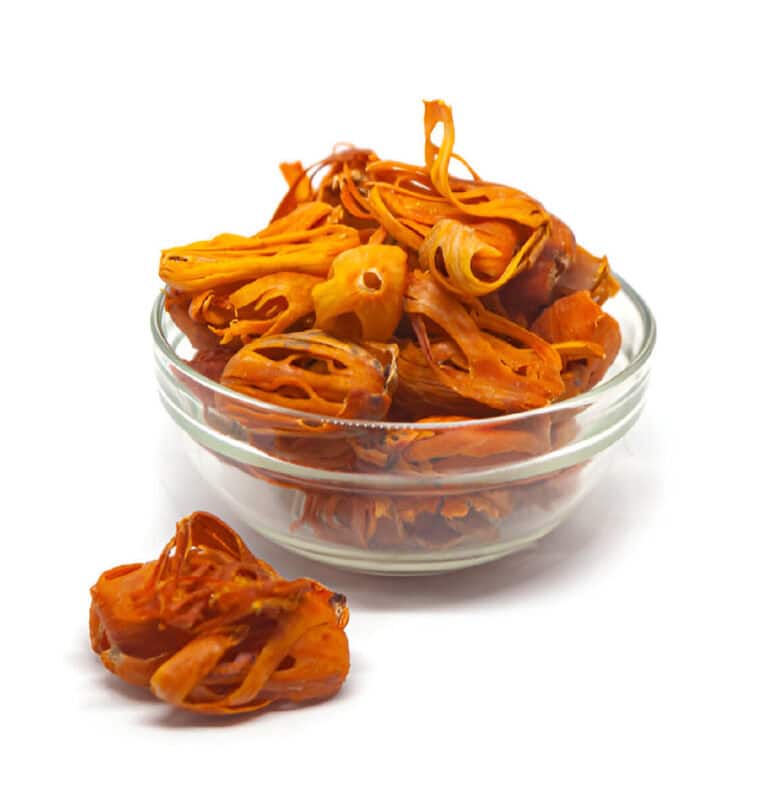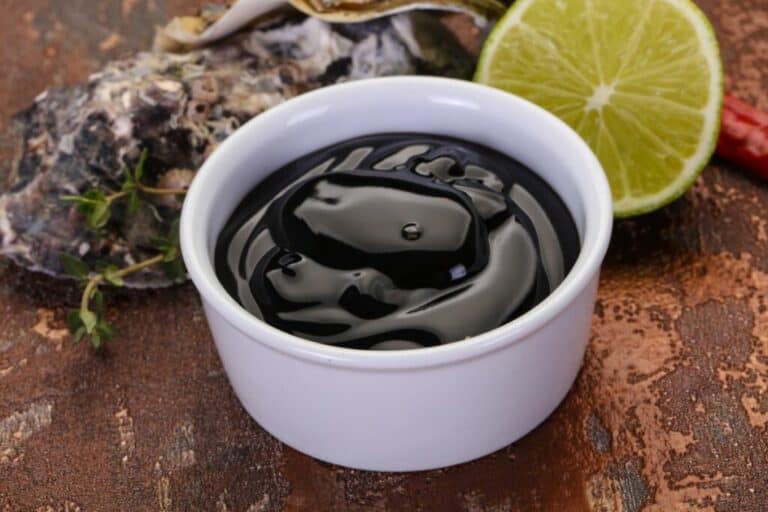Does Fish Sauce Contain Soy? The Content Revealed

Are you a fan of the tantalizing flavors of Asian cuisine? If so, you’ve likely encountered the magical elixir known as fish sauce. This condiment can elevate your dishes with its distinct aroma and unparalleled umami taste.
But what about those with dietary restrictions or soy allergies? The burning question lingers: Does fish sauce contain soy? Fear not, for today we shall uncover the truth and reveal the content you’ve been eagerly awaiting.
This article will explore fish sauce’s history, ingredients, and soy-free alternatives. From checking labels to crafting your own soy-free fish sauce, we’ve got you covered.
So join us on this flavorful journey as we set the record straight and navigate the captivating world of fish sauce, savoring every delicious word.
Understanding Fish Sauce and Soy
Fish sauce and soy sauce are two distinct condiments that play significant roles in various culinary traditions. Each possesses its own unique characteristics, flavors, and cultural significance.
To appreciate soy substitutes for soy allergies or preferences, you must understand fish sauce and soy’s origins, production methods, and flavors.
Fish sauce, a prized ingredient in Southeast Asian cuisine, embodies the essence of umami—an exquisite taste that brings a rich, savory depth to dishes. Made from fermented fish, typically anchovies or other small varieties, this amber liquid is a testament to the craftsmanship and culinary heritage of coastal communities.
The elixir is made by carefully layering salt and fish in wooden barrels and letting nature work its magic. With its distinct aroma and tangy, briny taste, fish sauce has become a staple in dishes such as Vietnamese pho, Thai pad thai, and Filipino adobo.
In contrast, soy sauce, an ancient condiment originating from East Asia, boasts a diverse array of flavors and regional variations. It is derived from soybeans that undergo fermentation, often in combination with roasted grains such as wheat or barley.
The resulting liquid ranges in color from light amber to deep brown, offering a spectrum of tastes from mildly salty to robustly savory. Soy sauce finds its place in a myriad of cuisines, including Chinese, Japanese, Korean, and beyond. Its umami-rich profile adds depth and complexity to stir-fries, sushi, marinades, and dipping sauces, demonstrating its versatility and culinary prowess.
Fish sauce and soy sauce both contribute to umami, the sought-after fifth taste that enhances cooking flavors.
Umami is often described as a savory, mouth-watering sensation that complements sweetness, saltiness, sourness, and bitterness. It is the magical ingredient that lends depth, balance, and a lingering satisfaction to dishes.
Fish Sauce Ingredients
To determine if fish sauce contains soy, we need to examine its ingredients. Authentic fish sauce typically consists of just a few basic components: fish, salt, and water. These ingredients are all you need to create the magic that is fish sauce. Soy is not part of the traditional fish sauce recipe.
Soy-Free Fish Sauce Options
If you have a soy allergy or follow a soy-free diet, fear not! There are soy-free fish sauce options available on the market. These alternatives are specifically crafted to cater to those with dietary restrictions or preferences.
One popular soy-free fish sauce substitute is made from ingredients such as fish, salt, and water, just like the traditional fish sauce recipe. The difference lies in the fermentation process, which ensures that no soy is involved. These soy-free fish sauces provide the same intense umami flavor without the addition of soy.
Checking Labels for Soy
When it comes to ensuring that a fish sauce is free of soy, taking the time to carefully examine product labels is crucial. Most fish sauce brands do not include soy in their formulations. But it is essential to exercise caution and verify this information before making a purchase.
Fortunately, food regulations mandate that manufacturers disclose all ingredients on their packaging. Doing so, will provide consumers with the necessary information to make informed choices about their dietary needs.
To begin, take a close look at the label of the fish sauce product. Scan through the list of ingredients, paying particular attention to any mention of soy or soy-based additives. Take note that soy can appear under various names on ingredient lists, such as soybean, soy protein, soy extract, or soy sauce. Carefully reading and understanding the language used can help identify the presence of soy in the fish sauce.
If soy is explicitly listed as an ingredient, it serves as a clear indication that the fish sauce contains soy. People with soy allergies or dietary restrictions should avoid this.
In such cases, it is advisable to seek alternative options that are explicitly labeled as soy-free or explore the substitutes mentioned earlier, which provide similar umami flavors without the inclusion of soy.
While checking labels for soy is an important step, it is also worth noting that manufacturers may change their ingredient formulations or introduce new products over time. Thus, even if it was soy-free before, it’s wise to check the labels of new batches or variations to make sure they meet one’s dietary needs.
Consumers can make informed fish sauce purchases by carefully reading product labels. This practice empowers individuals with soy allergies or dietary preferences to navigate the market confidently. So they can buy fish sauce that aligns with their needs.
Making Your Own Soy-Free Fish Sauce

There is nothing more convincing than making your own soy-free fish sauce. If you enjoy the satisfaction of creating homemade condiments, you can make your own soy-free fish sauce. It is easy to make; here’s a simple recipe to try:
Ingredients:
- 1 cup fish (such as anchovies or mackerel), deboned and minced
- 3 cups water
- 3 tablespoons sea salt
Instructions:
- In a jar or airtight container, combine the minced fish, water, and sea salt.
- Stir well until the salt is dissolved.
- Cover the container and let it sit at room temperature for at least 3 months, preferably in a cool, dark place.
- After the fermentation period, strain the liquid using a fine-mesh sieve or cheesecloth to remove any solids.
- Transfer the liquid to a clean bottle or jar for storage.
- Store the homemade fish sauce in the refrigerator to maintain its freshness.
Making your own soy-free fish sauce lets you control the ingredients and meet your dietary needs.
Incorporating Fish Sauce into Your Dishes
Let’s explore the many ways you can use fish sauce now that we know it doesn’t contain soy.
Fish sauce can be used as a marinade, a flavor enhancer in sauces and dressings, or added directly to stir-fries, soups, and curries.
Here are some dishes that can benefit from the addition of fish sauce:
- Pad Thai: This popular Thai noodle dish is incomplete without a drizzle of fish sauce for pad thai flavor enhancement. The umami flavor of the sauce adds depth and complexity to the dish.
- Vietnamese Pho: Fish sauce can elevate the broth of this traditional Vietnamese soup, providing a rich and savory taste that complements the aromatic spices and herbs.
- Green Papaya Salad: In Thai cuisine, fish sauce is a key ingredient in the dressing for green papaya salad. It adds a tangy, salty, and slightly sweet flavor that brings the salad to life.
- Stir-Fried Vegetables: When stir-frying vegetables, a splash of fish sauce can enhance the overall taste. It adds a savory note and helps balance the flavors of the dish.
- Grilled Meats and Seafood: Fish sauce can be used as a marinade for grilled meats and seafood, imparting a delicious umami flavor and helping to tenderize the protein.
- Dipping Sauces: Fish sauce serves as a base for many Asian dipping sauces, such as nuoc cham in Vietnamese cuisine or nam pla prik in Thai cuisine. These sauces are perfect for dipping spring rolls, dumplings, or grilled meats.
- Curries: Fish sauce can be a secret ingredient in curries, providing a savory undertone and enhancing the overall flavor profile of the dish.
Remember, a little fish sauce goes a long way, so start with a small amount and adjust according to your taste preferences.
How Does Fish Sauce Compare to Soy Sauce in Terms of Flavor?
Fish sauce and soy sauce are both flavorful condiments commonly used in Asian cuisine, but they have distinct differences in flavor.
Fish sauce has a unique umami-rich flavor derived from the fermentation of fish or shrimp. It provides a salty, savory, and slightly funky taste that adds depth and complexity to dishes. Fish sauce has a more pronounced and intense flavor profile compared to soy sauce.
Soy sauce, on the other hand, is made from fermented soybeans, wheat, water, and salt. It has a rich, salty, and slightly sweet flavor with notes of umami. Soy sauce adds a savory and balanced taste to dishes and is often used as a general seasoning and marinade.
Both fish sauce and soy sauce can add flavor to dishes, but fish sauce has a stronger taste.
The choice between the two depends on the specific dish being prepared and the desired flavor profile.
Fish Sauce Substitutes for Soy Allergies or Preferences
For people with soy allergies or dietary preferences, fish sauce alternatives are needed. Fortunately, there are several options available that can serve as substitutes for fish sauce while still adding delicious flavors to dishes.
1. Soy-Free Fish Sauce Alternatives:
To cater to the needs of individuals with soy allergies or preferences, some manufacturers have developed soy-free fish sauce alternatives. These alternatives are typically made from ingredients such as mushrooms, seaweed, or other fermented products.
These products aim to mimic the umami flavor profile of traditional fish sauce while being free from soy. They can be found in specialty stores or online, offering a viable option for those seeking a fish sauce substitute.
2. Mushroom-Based Sauces:
For vegans and soy-allergic people, mushroom-based sauces are a great alternative to fish sauce. The process of fermenting mushrooms with salt and water is common for these sauces. It creates a flavorful liquid that can be used as a substitute in various recipes.
Mushroom-based sauces offer a similar depth of flavor and umami notes, making them a suitable replacement for fish sauce in dishes like stir-fries, marinades, and dipping sauces.
3. Tamari:
Tamari is a type of soy sauce that is often gluten-free and contains minimal or no wheat, making it a viable option for individuals with soy allergies. It is made from fermented soybeans and has a rich, savory flavor similar to traditional soy sauce.
While tamari may not have the exact flavor profile of fish sauce, it can still provide a salty and umami taste to dishes. It can be used in stir-fries, dressings, and marinades as a substitute for fish sauce, adjusting the quantity according to personal taste preferences.
4. Coconut Aminos:
Coconut aminos are derived from the sap of coconut blossoms and serve as a soy-free alternative to soy sauce. They have a slightly sweeter flavor compared to tamari or traditional soy sauce but still offer a pleasant umami taste.
Coconut aminos can be used in place of fish sauce in various recipes, adding depth and complexity to dishes like curries, stir-fries, and dipping sauces. They are also a suitable option for individuals with soy allergies or those following a gluten-free or paleo diet.
5. Worcestershire Sauce:
Worcestershire sauce is a condiment with a complex flavor profile that includes tangy, sweet, and savory elements. While it is not a direct substitute for fish sauce, it can be used to provide a similar umami boost to dishes. Worcestershire sauce is typically made from a fermented blend of vinegar, molasses, anchovies, and various seasonings.
For individuals with soy allergies, it’s important to check the ingredient list, as some brands may contain soy-based components. Worcestershire sauce can be used sparingly in recipes as a substitute for fish sauce to enhance the overall flavor.
Adjust the amount of Worcestershire sauce used as a fish sauce substitute to suit personal taste and the dish. These alternatives can add depth, umami, and savory notes to a variety of recipes, making them suitable for soy allergies and dietary preferences.
In Summary
Fish sauce, a staple in Asian cuisine, does not typically contain soy. The traditional recipe consists of fish, salt, and water. However, it’s always important to read the labels when purchasing fish sauce to ensure there are no soy-based additives. If you have a soy allergy or follow a soy-free diet, there are soy-free fish sauce options available, or you can make your own at home.
Incorporating fish sauce into your dishes can elevate the flavors, providing a savory, umami taste. Whether you’re making Pad Thai, Vietnamese Pho, or simply stir-fried vegetables, fish sauce adds depth and complexity to your culinary creations. Experiment with different recipes and enjoy the unique flavors that fish sauce brings to the table.
So, the next time you’re in the kitchen, feel confident in using fish sauce without worrying about soy. Embrace the aromatic wonders of this delightful condiment and create mouthwatering dishes that will leave your taste buds craving for more.






